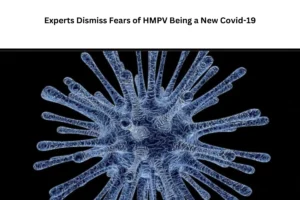
Study Links Traffic Noise and Pollution to Infertility
Study Links Traffic Noise and Pollution to Infertility
Infertility affects one in six people globally. With more than half the world’s population living in urban areas, researchers are investigating if city life might contribute to infertility.
A new study from Denmark explored how pollution and traffic noise might influence fertility rates. The findings suggest these factors could be linked to infertility, although men and women experience the effects differently.
Impact of Pollution on Fertility
Traffic pollution has well-documented effects on human health, including links to cancer and heart disease. Chemicals inhaled from polluted air can travel through the bloodstream to the reproductive system. These chemicals may harm fertility by disrupting hormones or damaging eggs and sperm.
While the effects of noise on fertility are less understood, some research suggests that it may affect stress hormones. Stress can disrupt hormone balance and potentially reduce fertility.
Study Overview
The study used Denmark’s nationwide databases, which track residents’ health, education, and location data over their lifetimes. Researchers focused on men and women aged 30 to 45 who were married or living together and had fewer than two children.
The study excluded individuals with prior infertility diagnoses or incomplete data. Researchers then cross-referenced where participants lived and if they had been diagnosed with infertility. Noise levels and air pollution at each residence were estimated, based on traffic noise (in decibels) and fine particulate matter (PM2.5) in the air.
Key Findings
In study links traffic noise Researchers have diagnosed infertility in 16,172 men and 22,672 women. The study found that men exposed to high levels of PM2.5 had a 24% higher risk of infertility. Women over 35 exposed to traffic noise above 55 decibels had a 14% higher risk of infertility.
The results were consistent regardless of whether participants lived in urban or rural areas. Other factors like education and income did not significantly change the results.
What It Means
This research shows that environmental factors like pollution and noise could have immediate and long-term effects on fertility. Men, who produce sperm continuously, may be more affected by short-term environmental changes. Exposure to pollutants can quickly impact sperm quality and quantity.
For women, the process might be slower. Women are born with all their eggs, which are more protected against environmental damage but not immune. It could take longer for the effects of pollution and noise exposure to fully manifest in female fertility.
AMUST READ: Y Chromosome Shrinking: What It Means for the Future of Human Reproduction
Study Limitations
The study’s method, called “data linkage,” helps analyze large amounts of data over long periods. However, this approach relies on assumptions, such as whether participants were trying to conceive.
It also assumes that noise and pollution exposure was constant based on participants’ home addresses. More precise data collection, including surveys on individual experiences, sleep disturbances, and stress, could provide a clearer picture.
Despite these limitations, the study offers valuable insight into how pollution and noise might impact fertility. More controlled studies, involving direct measurements of exposure, are needed to deepen our understanding.
Conclusion
This groundbreaking Danish study highlights the potential connection between air pollution, traffic noise, and infertility. While more research is required, the findings emphasize the importance of considering environmental factors in reproductive health.
ALSO READ : Jamia Develops World’s First AI-Driven Oral Cancer Database







